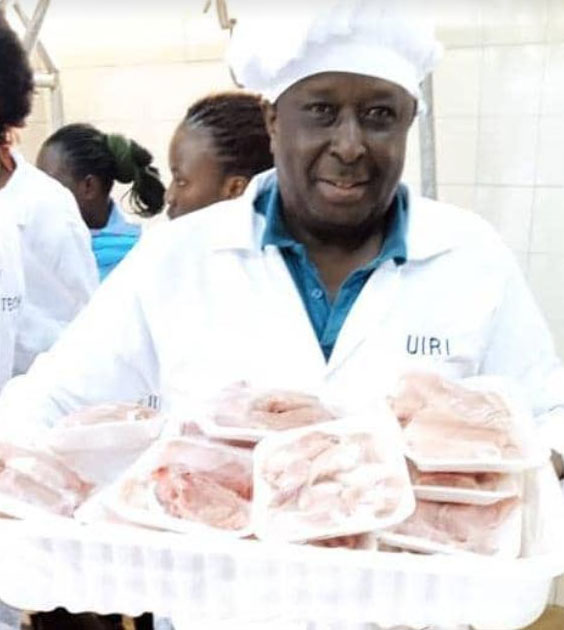
SPECIAL FEATURE | Alfred Geresom Musamali | At first I felt insulted when nearly three years ago somebody suggested that since I was mandatorily retiring from the public service upon clocking the age of 60 years and would have fewer if any savings on which to rely till the Lord calls me to Himself, I could consider rearing rabbits.
Hass avocado led me into temptation
I did not even take up the joke about rabbitry immediately. Instead I took a winding journey growing what has increasingly become referred to as green gold – hass avocado. After staying away from my ancestral village in Nabumali Town Council for almost three decades, I eventually realised I had no property and reclaimed as a fall back position some piece of land from my parents. And because Musubi Farm in Mayuge was hyping the growing and exporting of hass avocado, especially into the European market, I, too, jumped on the bandwagon, planting hass on the land. But I almost as soon learnt that I could not use chemical fertilisers on hass if I intended it for the European market. Instead, I was advised, I ought to use well composited animal dung, biomass manure and other things for which I would hardly ever have the skill, interest and time. It all looked like it was going to lead me along another tempting path to despair, anyway. Then I accidentally discussed the matter with a knowledgeable colleague.
“You have a metropolitan home in Mukono, not so?” asked the colleague, to which I admitted I had. “Do you have any small spaces in the compound where you could keep a few animals,” he next asked, to which I sneeringly answered in the affirmative, thinking he was going to steer me towards dirty, noisy, smelly piggery which, in any case, would still have no connection with hass avocado (except as a salad for pork!).
“Then rear rabbits,” he concluded. I looked him deep in the face and thought that alcohol had taken his facaulties. So, I irritably asked, “What is the relationship between rabbits in Mukono and my hass avocado at Nabumali, over two hundred kilometres away?”
“Not only are they the potential source of organic pesticides but also of foliar fertiliser,” he said.
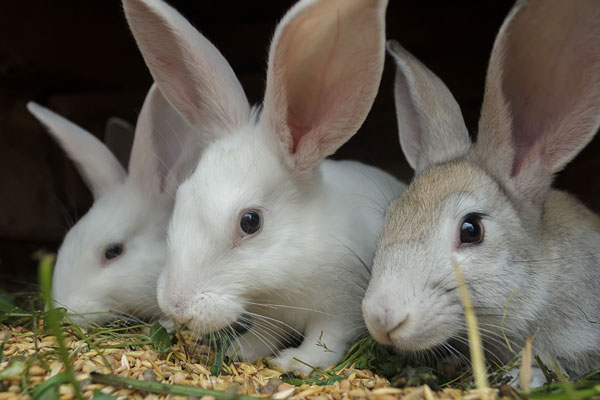
“Rabbit droppings are some of the best sources of organic fertiliser in the world. Unlike those of chicken, rabbit droppings do not smell. Besides, the animals are so quiet nobody will even know you have them. As for rabbit urine, it has a higher nitrogen content compared with the urine coming from other animals. The content of rabbit urine fertilizer is 2.72% nitrogen, 8.7% phosphorus, 2.3% potassium, 3.6% sulfur, 1.26% calcium and 4.0% magnesium, which is precisely what your hass needs”.
He said that the urine is foliar because it can be absorbed through the leaves rather than the roots. “The urine, when sprayed on the crops, also repels rather than kills pests such as warms, thrips, loopers, mites and catepillars. While some of those creatures cause damage to crops, they are also useful to the soils. That is why we need to repel rather than kill them”. He cautioned, though, that I would need to dilute the urine in the proportions of five litres of water to one litre of urine otherwise the concentrated stuff could scorch the crops.
“But how would I house and feed the rabbits? How does anyone tap the droppings and urine” I asked, again with tongue in the cheek.
“You would need to construct cages of a certain specification, fitted with gutters through which to drain droppings and urine. In the beginning, when the animals are few, you could feed them on some grasses. However, given that they litter five to ten kittens every two months, you would soon need industrially manufactured feeds,” he said.
Noting that I was wondering where to buy the feeds, he quickly added that if there was a shortage I could even use chicken feed because the ingredient formulae are similar.
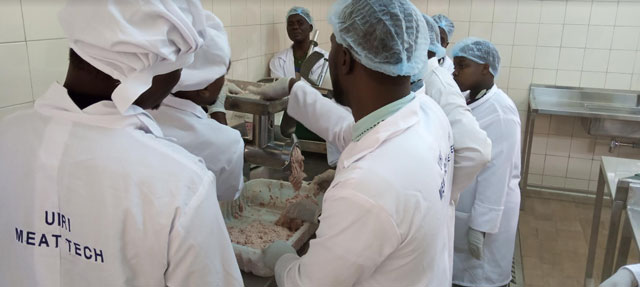
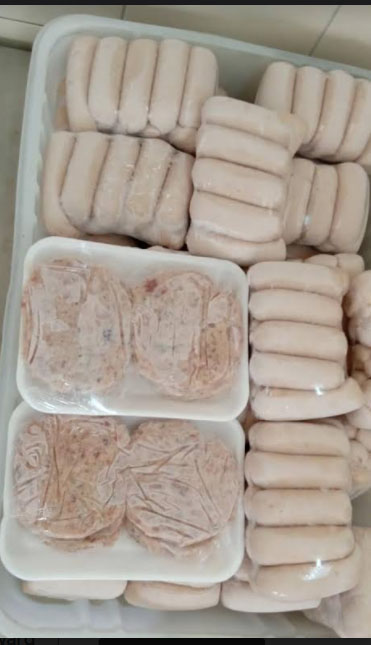
Rabbit is white meat
Aha, another question arose. What do I do with the rabbit meat? Chap laughed out his lungs. “Don’t you eat chicken? Don’t you have neighbours who could run out of food? If you came to my home and I gave you rabbit without further explanation you would think you have eaten chicken.”
According to Sunshine Coast Organic Meats, an international nutrition sources company, “white meat is a well-known meat because of chicken and turkey, both poultry meats with overall lower than red meat fat counts”. This, Sunshine Coast point out, also includes many fish species, rabbit and duck. However, they exclude pork though it looks white.
Writing in “Animal Frontiers”, an Oxford Academic Journal, Jimmy T. Keeton and Michael E. Dikeman say, “Meat and food scientists may categorize individual muscles or muscle groups as “red” or “white” based on their myoglobin concentration, lipid profile, mitochondrial densities, muscle fiber physiology, and/or gin response to physiological change during postmortem metabolism and/or proteolysis”.
They say, “Myoglobin is a store for iron produced in the blood, which is why it is a red colour; you can identify the amount of iron, as well as the age of the animal, based on the depth of colour. Red meats do have higher levels of iron, but white meat also has many benefits for our gut, heart and brain health”.
According to Sunshine Coast, “White meat is reportedly good for managing cholesterol due to its high levels of polyunsaturated and monounsaturated fatty acids like omega-3 and omega-6, generally found in fish”. These fatty acids, they say, balance low-density with high-density lipoprotein cholesterol, adding that white meat is generally high in Vitamin B, particularly B3 and B12 for brain function and blood health.
And red meat? According to Keeton and Dikeman, “While “red” meat consumption has been linked epidemiologically to diabetes, stroke, cancer, morbidity, and mortality, white meat(poultry) and fish have not shown the same degree of association with these health conditions“.
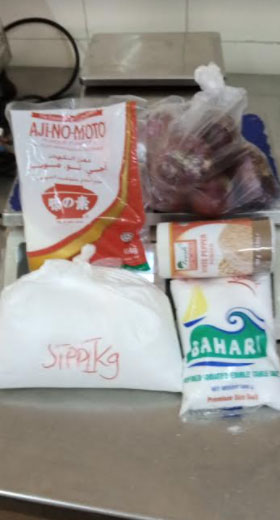
The Uganda Cuniculture Association organised the UIRI Training
Cuniculture is the art and science of rearing, processing, selling (and, presumably, even eating) rabbit products. The Uganda Cuniculture Association (UCA) is a membership-based civil society group advocating value addition to rabbits. UCA chairperson Justus Marungi organised the five-day training at the UIRI to enable ten (10) rabbit farmers from various parts of the country learn to curve speciality parts of rabbits such as thighs and backs as well as smoke some for flavour or further preservation before deep freezing them for transportation to markets. We also learnt how to debone the carcasses to make mince meat for burgers and sausage. In addition, we briefly explored how to make pet meal for our cats and dogs out of the residual bones, the offal, the heads and feet (mulokony). We packaged and branded stuff, too, fit for high class supermarkets.
Finally, we were given an outline on how to develop a business plan so that we can commercialise our exciting ventures. The next stage will be for some of us to scoop business incubation opportunities so that we are able to continue using the UIRI facilities to process our products until we can be in position to raise funding, buy our own machinery and establish small or large scale rabbit value chain facilities wherever we chose.
Theory is easy but practice needs dedication
Wait a minute, however, fellow retiree, before you dump all your gratuity into these rodents. Any agricultural venture is not for the faint-hearted. The colleague who made rabbitry look very simple had probably never practiced it himself. To begin with, the farmer needs in place phytosanitary measures in place. Every guest who enters the area where rabbits are kept must step into a foot bath with jik or other disinfectant so that whatever disease that accompany such guest remain at the entry. And that is not what you can achieve in a compound where there are children regularly coming and going or where older relatives deride protocol. Besides, because chicken and rabbits have many biological systems in common, they also share diseases such as coccidiosis.
So, from the outstart the farmer must choose between rearing rabbits and rearing chicken, especially if the chicken are free range. Besides, there are security issues. What are you going to do about neighbours or their dogs who will sneak into the compound in the middle of the night and snatch one at a time little animals that make no noise? Moreover, there are market issues, too. Any person who grew up thinking that rabbits are children’s pets is either not going to buy one to eat or not going to pay a production cost recovery price So, the farmer needs to package and market the product like the other sharp-witted salesman who during winter sold as a warmer some deep freezer to an Eskimo living in Greenland. Until then, we shall only keep rearing, processing and eating the healthy meat ourselves and, perhaps, donating some to our neighbours, relatives and friends.
*******

The author is Founding Director of Vicnam International Communications Ltd, a private firm of communications, public relations and information management consultants. He specialises in the Proofreading and General Editing (PAGE) of documents and can be contacted by Tel: (+256)752-649519 and by Email: agmusamali@hotmail.com.
 The Independent Uganda: You get the Truth we Pay the Price
The Independent Uganda: You get the Truth we Pay the Price



